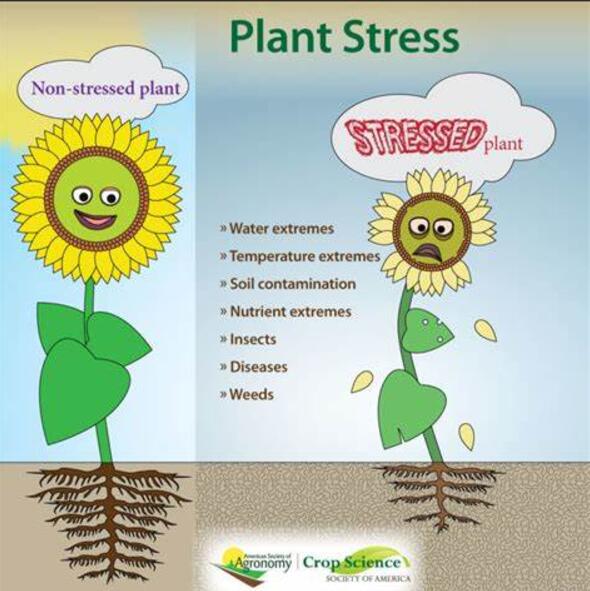Regulation of secondary metabolism in Cannabis sativa glandular trichomes by abscisic acid and water deficit stress during late flowering development
IF 6.8
Q1 PLANT SCIENCES
引用次数: 0
Abstract
Cannabis (Cannabis sativa L.) is a medicinally important plant of moderate drought tolerance. The glandular trichomes (GT) on female flowers of cannabis are the main site of production and storage of cannabinoids and terpenoids. While water deficit stress (WD) was shown to modulate cannabinoid content in cannabis, it remains unknown how GT regulation is affected to achieve this. We quantified the GT proteome and floral cannabinoid and terpenoid content in late flowering ‘Hindu Kush’ cannabis treated with either short-term WD or with an abscisic acid (ABA) foliar spray. We found that WD and ABA changed the abundance of many of the same proteins in the GT, with changes reflecting a decrease in primary metabolic processes and an increase in stress response mechanisms. Results suggested ABA likely mediates changes in the GT indirectly by affecting salicylic acid and ethylene signalling. WD caused the cannabinoid cannabigerolic acid to increase in content, while ABA caused monoterpene content to increase. Interestingly, proteins involved in the cannabinoid and terpenoid biosynthetic pathways either decreased in abundance or did not change in either treatment, indicating that the increased secondary metabolite content is likely driven by a process other than upregulation of the pathways’ proteins.

求助全文
约1分钟内获得全文
求助全文
来源期刊

Plant Stress
PLANT SCIENCES-
CiteScore
5.20
自引率
8.00%
发文量
76
审稿时长
63 days
期刊介绍:
The journal Plant Stress deals with plant (or other photoautotrophs, such as algae, cyanobacteria and lichens) responses to abiotic and biotic stress factors that can result in limited growth and productivity. Such responses can be analyzed and described at a physiological, biochemical and molecular level. Experimental approaches/technologies aiming to improve growth and productivity with a potential for downstream validation under stress conditions will also be considered. Both fundamental and applied research manuscripts are welcome, provided that clear mechanistic hypotheses are made and descriptive approaches are avoided. In addition, high-quality review articles will also be considered, provided they follow a critical approach and stimulate thought for future research avenues.
Plant Stress welcomes high-quality manuscripts related (but not limited) to interactions between plants and:
Lack of water (drought) and excess (flooding),
Salinity stress,
Elevated temperature and/or low temperature (chilling and freezing),
Hypoxia and/or anoxia,
Mineral nutrient excess and/or deficiency,
Heavy metals and/or metalloids,
Plant priming (chemical, biological, physiological, nanomaterial, biostimulant) approaches for improved stress protection,
Viral, phytoplasma, bacterial and fungal plant-pathogen interactions.
The journal welcomes basic and applied research articles, as well as review articles and short communications. All submitted manuscripts will be subject to a thorough peer-reviewing process.
 求助内容:
求助内容: 应助结果提醒方式:
应助结果提醒方式:


